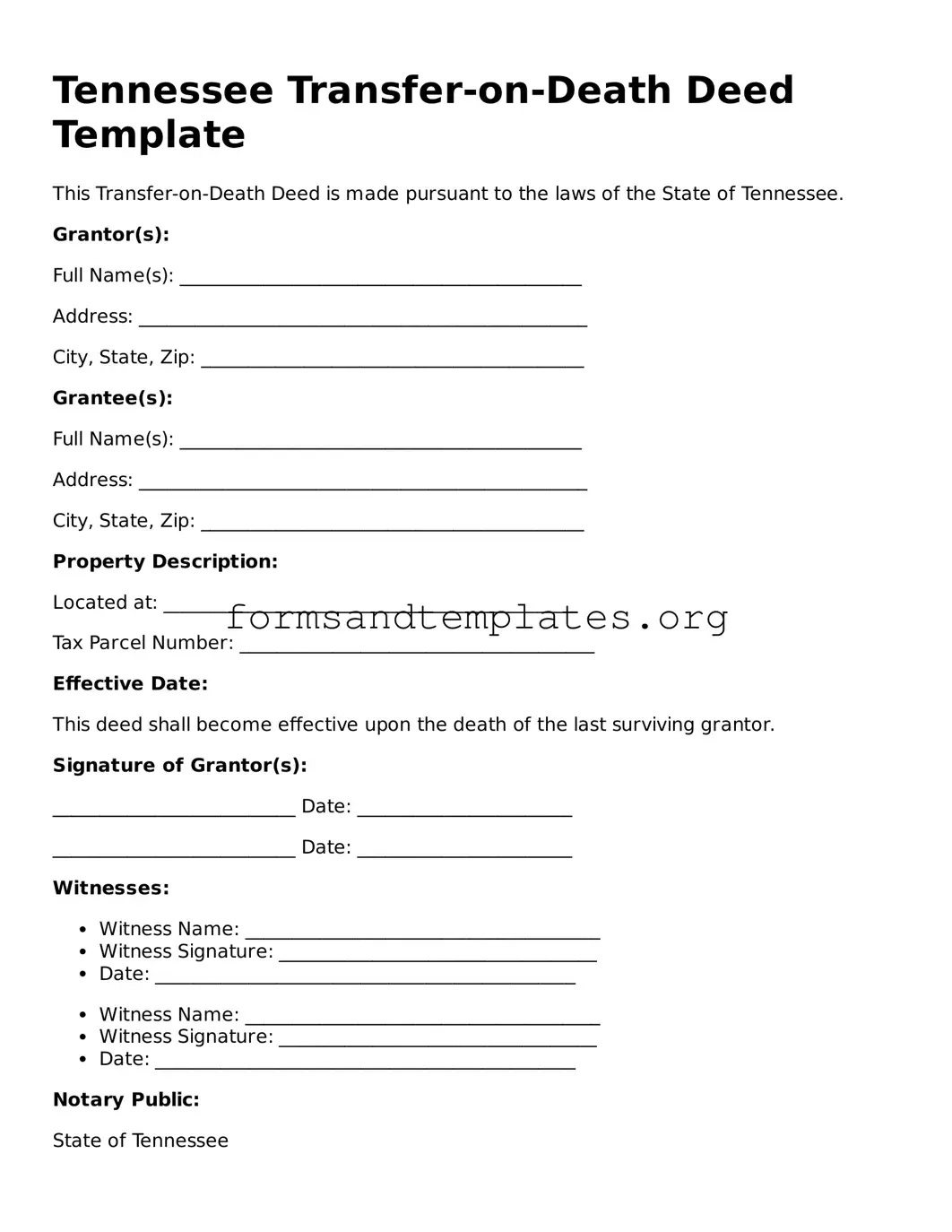Tennessee Transfer-on-Death Deed Template
This Transfer-on-Death Deed is made pursuant to the laws of the State of Tennessee.
Grantor(s):
Full Name(s): ___________________________________________
Address: ________________________________________________
City, State, Zip: _________________________________________
Grantee(s):
Full Name(s): ___________________________________________
Address: ________________________________________________
City, State, Zip: _________________________________________
Property Description:
Located at: ____________________________________________
Tax Parcel Number: ______________________________________
Effective Date:
This deed shall become effective upon the death of the last surviving grantor.
Signature of Grantor(s):
__________________________ Date: _______________________
__________________________ Date: _______________________
Witnesses:
- Witness Name: ______________________________________
- Witness Signature: __________________________________
- Date: _____________________________________________
- Witness Name: ______________________________________
- Witness Signature: __________________________________
- Date: _____________________________________________
Notary Public:
State of Tennessee
County of ___________________________________
This instrument was acknowledged before me on the ____ day of ____________, 20__.
______________________________
Notary Public Signature
My Commission Expires: ________________________
Note: This document should be filed with the appropriate county register of deeds.
